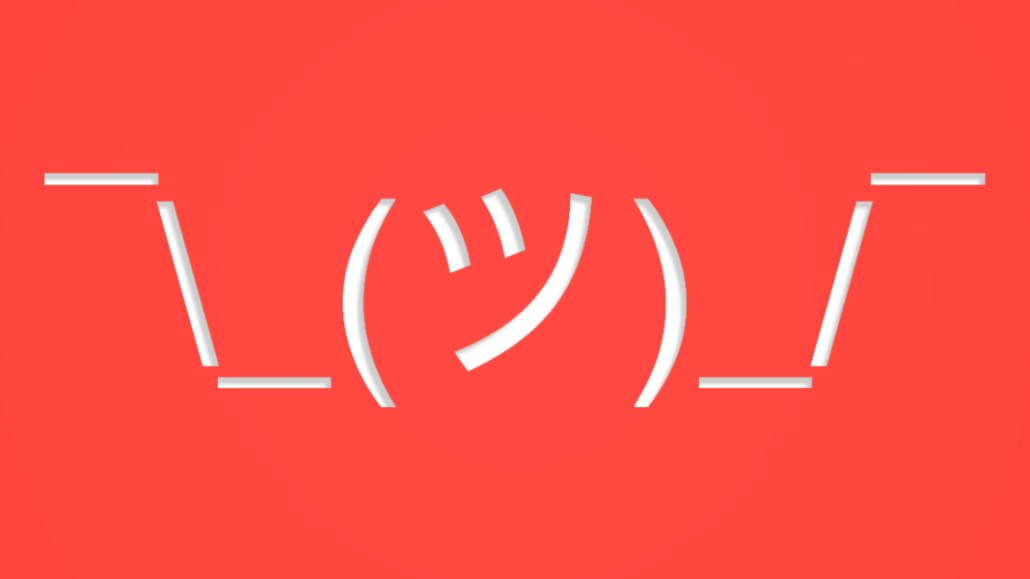Save 50% on a 3-month Digiday+ membership. Ends Dec 5.
The latest YouTube brand safety ‘crisis’ shows advertisers are taking a more nuanced approach

Advertisers are responding differently to the latest brand safety snafu on YouTube compared to 2017 when many took their ad dollars and ran for the hills.
When news broke earlier this month that companies including Samsung, L’Oréal, Warner Bros and Danone had advertised on YouTube videos promoting climate change denial, they wasted no time pulling their ads from the content they deemed inappropriate.
L’Oréal said in a statement it was working with YouTube to remove the ads from the videos that promoted climate misinformation. The advertiser won’t, however, stop buying ads on other videos on the site. This was a more pragmatic response by the advertisers compared with what happened in 2017 when many of them completely suspended campaigns because of the presence of ads that monetized offensive videos.
For the terrorism and pedophilia videos at the core of prior brand safety scandals, there is a public consensus that they should not be posted. But when it comes to the topic of climate change, there’s no public consensus about whether videos discussing climate change denial should remain online. While videos that discuss the overall climate change could boost the sustainability credentials for the likes of Samsung and L’Oréal, they might be factually inaccurate, which is what was subsequently discovered. Yet YouTube’s current controls won’t let advertisers avoid videos with factually incorrect information; the companies can either advertise on videos that discuss climate change or not.
Without tighter controls on YouTube, advertisers are effectively stuck in a game of whack-a-mole; they are finding out after the fact that their ads are appearing on videos that are not to their suiting, which are then blacklisted. In such instances, the advertisers are faced with the prospect of not reaching as many people online so as to avoid topics that could potentially become toxic for their advertising.
To reconcile both the risks of appearing against inappropriate content and rewards of advertising to more people on YouTube, advertisers are becoming more proactive when it comes to managing whitelists and blacklists.
Unilever, for example, ensures that humans, either its own marketers or agency executives, help decide which videos on YouTube are blacklisted. The approach is similar to the one adopted by Mondelez, according to Adexchanger.
Ad position: web_incontent_pos1
“Any marketer that has anything less than a high brand-safety risk tolerance needs to be working with their agencies, publishers and content platforms to actively and consistently manage whitelists, blacklists and everything in between,” said Peter Sedlarcik, Havas Media’s chief data officer.
At Publicis-owned media agency Zenith, planners try to preempt the appearance of advertisers’ ads with any inappropriate content. It starts with deciding together with the advertiser what content is appropriate for the message they want to promote, said global director Andrew Jude Rajanathan. Each advertiser has a defined set of brand-safety guidelines, which are reviewed regularly and updated when necessary, he said. For example, YouTube executives share daily lists of the most topical news with planners, who can decide whether there are certain stories the campaigns on the video site need to steer clear from, said Rajanathan.
When using the OpenSlate platform, advertisers can forecast how much inventory they’re taking off the table when they block certain videos; that is then used to try to remove the ones that would knock either the reputation of the advertiser or the performance of the ads. Other ad tech vendors like Zefr have launched a data management platform to help advertisers target videos contextually so that they’re not reliant on keyword tools that can’t account for whether a video is suitable for an advertiser.
“Advertisers are trying to be more thoughtful about where their ads run because if they’re too curative, then they run the risk of reaching fewer people but for higher costs,” said Mike Henry, CEO of video analytics firm Openslate.
For its part, Google has tried to help advertisers avoid videos that are not suitable for their brands. YouTube has employed human content moderators since the first brand safety crisis in 2017, and improvements have been made to the technology that scans videos for objectionable audio or video.
Ad position: web_incontent_pos2
“Conversations are shifting from brand safety, which is a black-and-white concept, to brand suitability, which is a more subjective issue,” Henry said. “Those conversations revolve around advertisers reaching further into a wider array of content before they decide they’re outside their comfort zone on platforms like YouTube.”
The pivot toward brand suitability is emblematic of how brand safety strategies are slowly becoming more sophisticated and nuanced across the web.
Advertisers are introducing clauses into their contracts with agencies that state that they will pay only for ads that meet their brand safety targets, said Angus McLean, director of digital for media auditing firm Ebiquity. These criteria are increasingly being built into agency-performance-related fees or bonuses, McLean said.
More in Media

What publishers are wishing for this holiday season: End AI scraping and determine AI-powered audience value
Publishers want a fair, structured, regulated AI environment and they also want to define what the next decade of audience metrics looks like.

Digiday+ Research Subscription Index 2025: Subscription strategies from Bloomberg, The New York Times, Vox and others
Digiday’s third annual Subscription Index examines and measures publishers’ subscription strategies to identify common approaches and key tactics among Bloomberg, The New York Times, Vox and others.

From lawsuits to lobbying: How publishers are fighting AI
We may be closing out 2025, but publishers aren’t retreating from the battle of AI search — some are escalating it, and they expect the fight to stretch deep into 2026.
Ad position: web_bfu